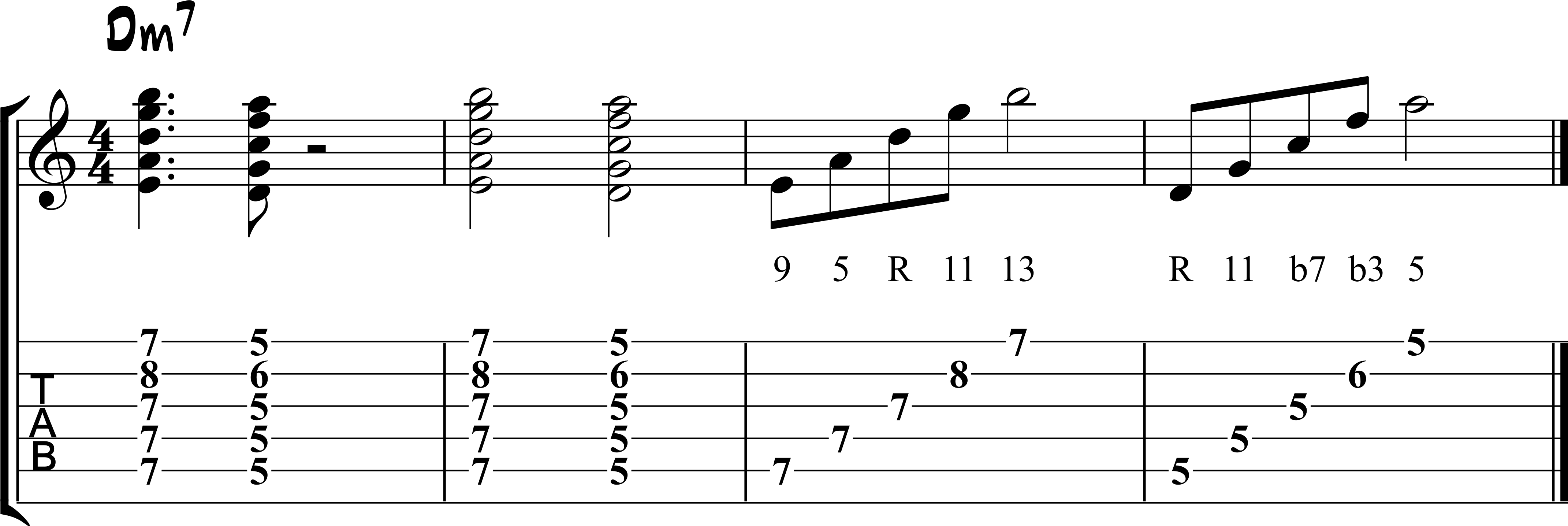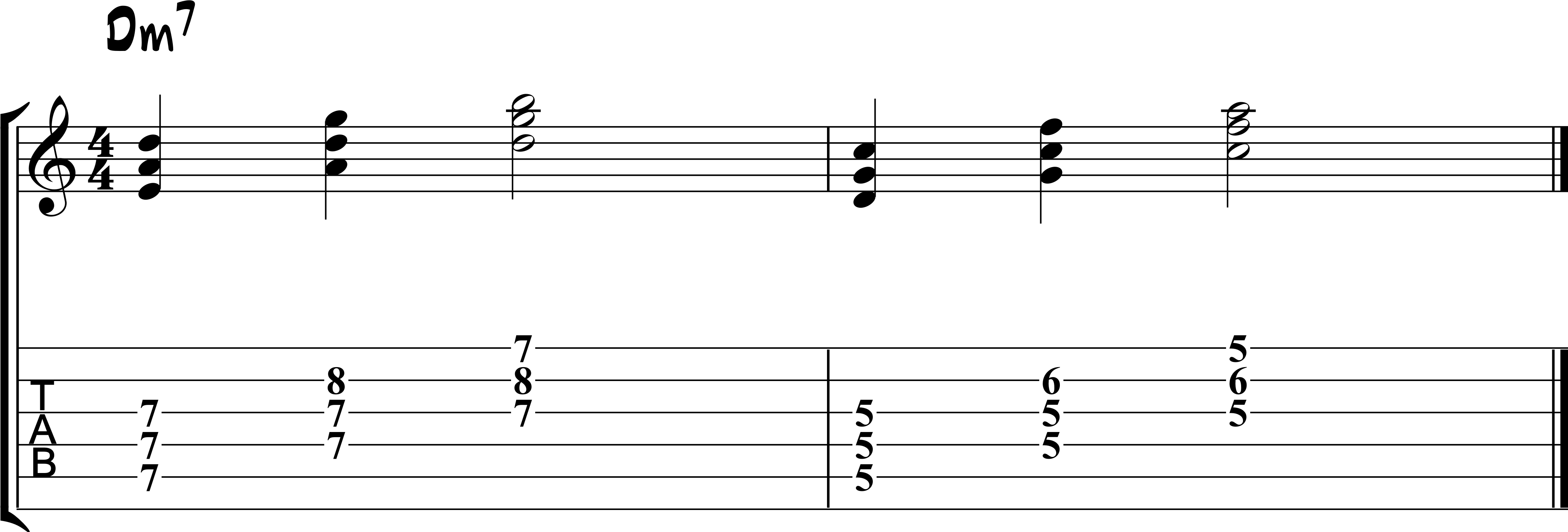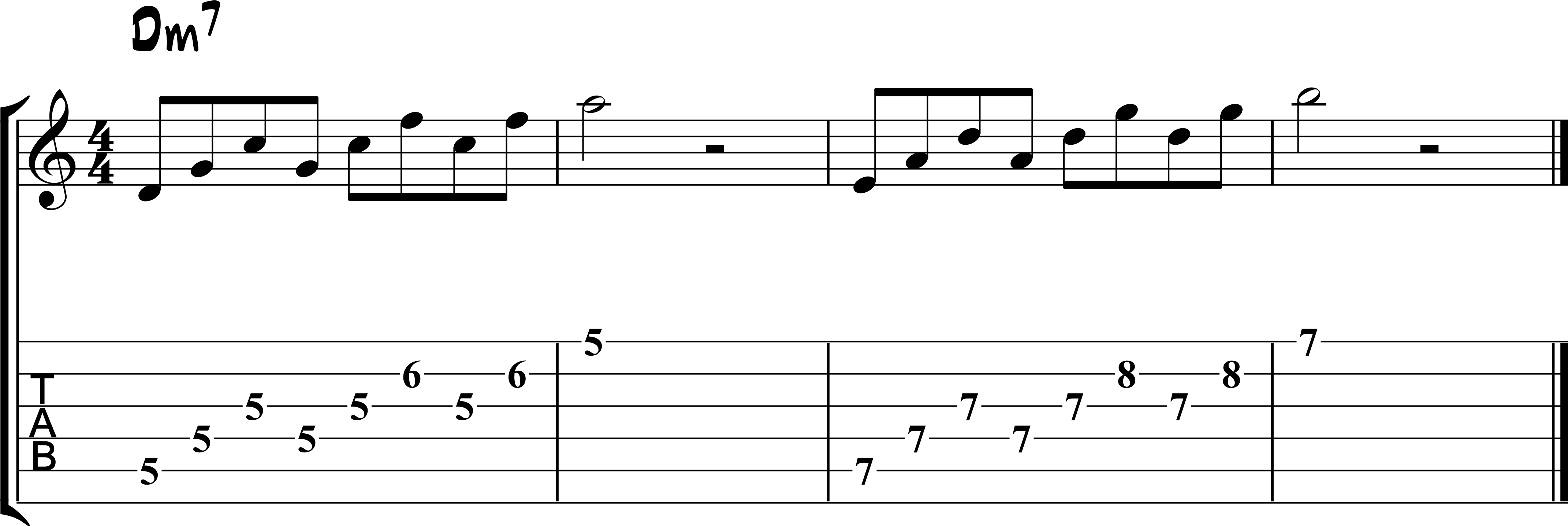So What Chords – Arpeggio Soloing
The album Kind of Blue, and the song So What, are often a gateway into jazz for many musicians with a rock, pop, and blues background.
But.
While you enjoy Bill Evans’ opening chords to So What, and learned to comp them on guitar, there’s more to these shapes than meets the eye.
In this lesson, you build your single-note soloing vocabulary with these shapes as you go beyond comping with So What chords.
The So What Chords
Here are the opening chords played by pianist Bill Evans on the classic recording of So What from the album Kind of Blue.
The chords are built by stacking 4th intervals until you hit the top two strings, where there is a 3rd between those last two notes.
As well, there are two shapes played over Dm7, Em11 and Dm11, that outline the intervals written in the last two bars of the example.
The first concept to take from these chords, is that whenever you have a m7 chord, you can play a m11 shape from the root and 2nd of that chord.
When doing so, you bring that cool, So What vibe to your m7 comping phrases.

After you have these shapes down, it’s time to take the first step into breaking these chords up into single-note melodies in your solos.
Breaking Up So What Chords
To begin, you break these chords into smaller shapes that you can then use both in your comping and soloing phrases.
Here are those shapes for Em7 and Dm7, which are broken up into three-note groups to make them easier to move around the fretboard.
So What Chords 2 Audio

Now that we’ve broken up So What chords into smaller shapes, you can arpeggiate these shapes to create single-note versions of these chords.
You can see an example of this below, where I’ve picked each chord from the lowest to highest notes.
From a picking perspective, you can use economy picking such as down-down-up for each shape.
You can also use sweep picking, such as down-down-down, or hybrid picking, where you use your pick and fingers to play each shape.
I’ve written ascending versions of each shape to get you started.
But.
You can also descend each shape, playing from the highest note down to the lowest note, when practicing this exercise.
Once you’ve got these Dm7 shapes under your fingers, put on a Dm7 backing track and solo over using these shapes in your lines.
From there, you can take these shapes to other keys, and later full tunes, in your practice routine.
So What Chords 3 Audio

So What Chord Variations
Here are a few of the variations that I like to use with these So What chord arpeggios when exploring them on the fretboard.
The first variation plays down each 3-note shape as you work your way up the strings.
In the second variation, you alternate up and down picking for each 3-note shape across the strings.
I’ve written these variations over Dm7, so make sure to apply them to Em7 for the full So What chord experience.
Once you have these picking variations under your fingers, add them to your solos over backing tracks to solidify them in your playing.
So What Chords 4 Audio

So What Chords Lick
To get you started with these ideas in a soloing context, here’s a sample lick that uses material from this lesson.
I’ve used the So What Chords in the first measure, and then finished the phrase with bebop techniques from there.
When you’ve got this lick under your fingers, write out a few of your own as you explore these chords further in your studies.
So What Chords 5 Audio

